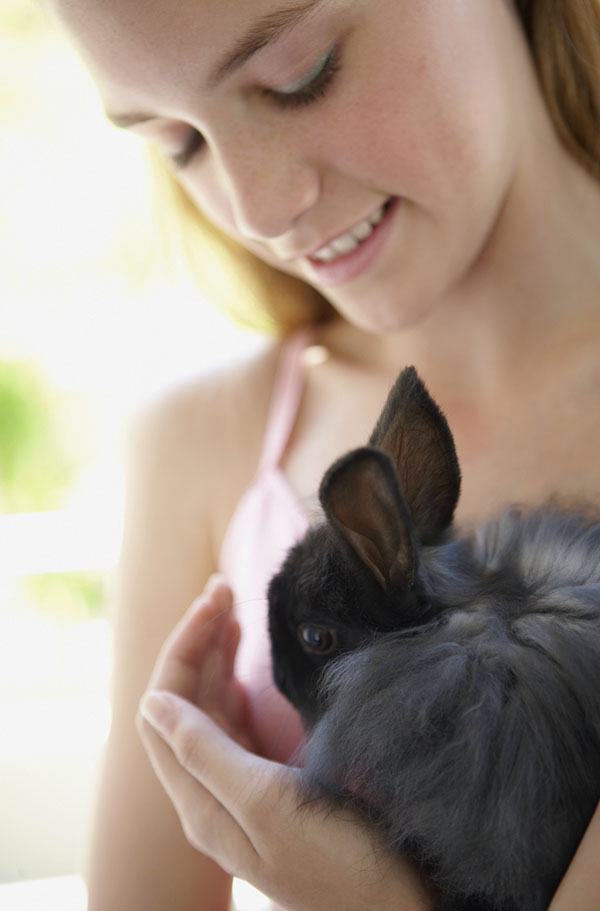Pet rabbits are definitely cute and cuddly and provide great company for any pet-friendly person. They make exceptional house pets when cared for properly. If you’re considering adopting a pet rabbit, make sure to have space for him/her to roam. You’ll want to have access to a veterinarian specializing in rabbit care, too. Remember, rabbits and children are generally not a great combination as kids lack the skill to handle little animals.
Consult our veterinarians for a routine healthcare check for your pet rabbit.
style=”clear: none;”If you think a pet rabbit is suitable for your lifestyle, and that you’re suitable for theirs, then read on to learn all about basic rabbit care.
Step 1: Bunny Proof Your Home
Like most creatures, rabbits need space to run and explore the environment. You’ll want to create a place that’s safe for both of you. Simply elevating objects around your house and out of their reach can protect your personal items and your rabbit’s well-being. You can also bunny-proof open cables and wires by covering them with plastic sleeves or tubing.
Step 2: Set Up Appropriate Indoor Housing
 Whether you plan to keep your pet rabbit in a specific area or let them roam free in your home, be familiar with what they need. To keep your bunny in an enclosed area while you’re out of the house, use a puppy pen, bunny condo or large cage. Make sure the area is large enough for them to hop around freely. Your bunny’s primary living location should never be isolated from your family’s main living areas.
Whether you plan to keep your pet rabbit in a specific area or let them roam free in your home, be familiar with what they need. To keep your bunny in an enclosed area while you’re out of the house, use a puppy pen, bunny condo or large cage. Make sure the area is large enough for them to hop around freely. Your bunny’s primary living location should never be isolated from your family’s main living areas.
Step 3: Provide Proper Nourishments
Hay is part of a rabbit’s basic healthy diet. It should be available to your bunny at all times in a dry, clean and easily accessible feeder. Baby rabbits should have access to fresh alfalfa while adult rabbits need timothy hay, grass hay or oat hay. You can supplement your pet’s hay diet with fresh veggies, a few fiber-rich pellets and fresh water.
Step 4: Don’t Forget the Litter Box
For some odd reason, rabbits eat hay and relieve themselves at the same time. Since they also like to do it in the same area, you can set up a litter box. A litter box lined with a thin layer of safe, recycled newspaper pellet litter near their feeding bowls will help encourage good litter box habits.
Step 5: Activity and Exercise Area
A bored bunny is an unhappy bunny. Playtime is an essential part of their lifestyle. Your pet rabbit will need plenty of physical activity and mental stimulation. You can build or purchase a cardboard castle or a variety of other toys to keep your fluffy friend entertained for hours. Don’t forget to give them space to exercise after a long day of being in their pin.
Step 6: Grooming 101
Like most small pocket pets, rabbits don’t require much grooming. They’re fairly clean as they wash themselves often. However, be mindful of their shedding cycles that happen a couple of times a year. Regular brushing to remove excess fur is a good practice to start up. Regular nail clipping can also ensure your rabbit’s nails don’t curl in or snag somewhere unsafe. Consult our vets for the best nail-trimming methods.
